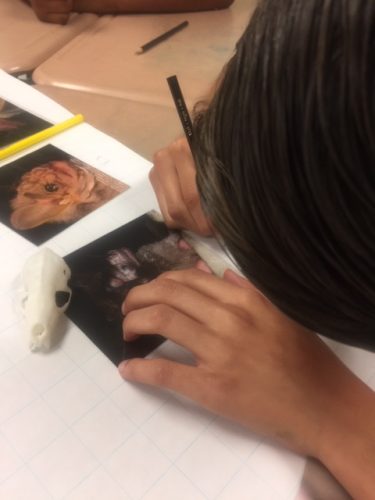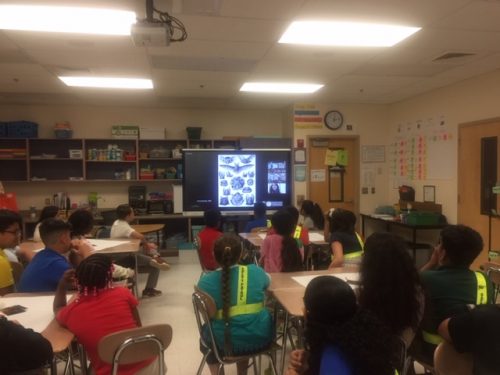Bats are a great animal to study when it comes to teaching students about adaptations. The incredible diversity among bats allows for several adaptations to be examined all at once. 
When science teacher Will Kerr reached out to Scientist in Every Florida School requesting a scientist to cover a 5th-grade standard related to adaptations, we suggested that the model organism be bats. We knew just the perfect scientist — bat biologist, Aditi Jayarajan.
Together, Kerr and Jayarajan began planning a lesson in which content would be delivered ‘from the field’ through video and audio recordings from Jayarajan’s fieldwork in the Bahamas. One of the activities in the lesson plan also brought students to the Florida Museum of Natural History and its collections through a virtual field trip. Finally, with Jayarajan joining the classroom remotely from the University of Florida via Zoom, the students and teachers analyzed 3D printed bat skulls and imagery in the classroom with her help.
Students learned about several bat adaptations such as powered flight, echolocation, social behaviors, skull and tooth morphology and diets and habitats. 
Through the series of activities, students put into practice the Florida 5th grade standard:
SC.5.L.17.1–Compare and contrast adaptations displayed by animals and plants that enable them to survive in different environments such as life cycle variations, animal behaviors, and physical characteristics.
For more information or help matching standards to science experts, please contact the SEFS team or visit us at Scientist in Every Florida School.